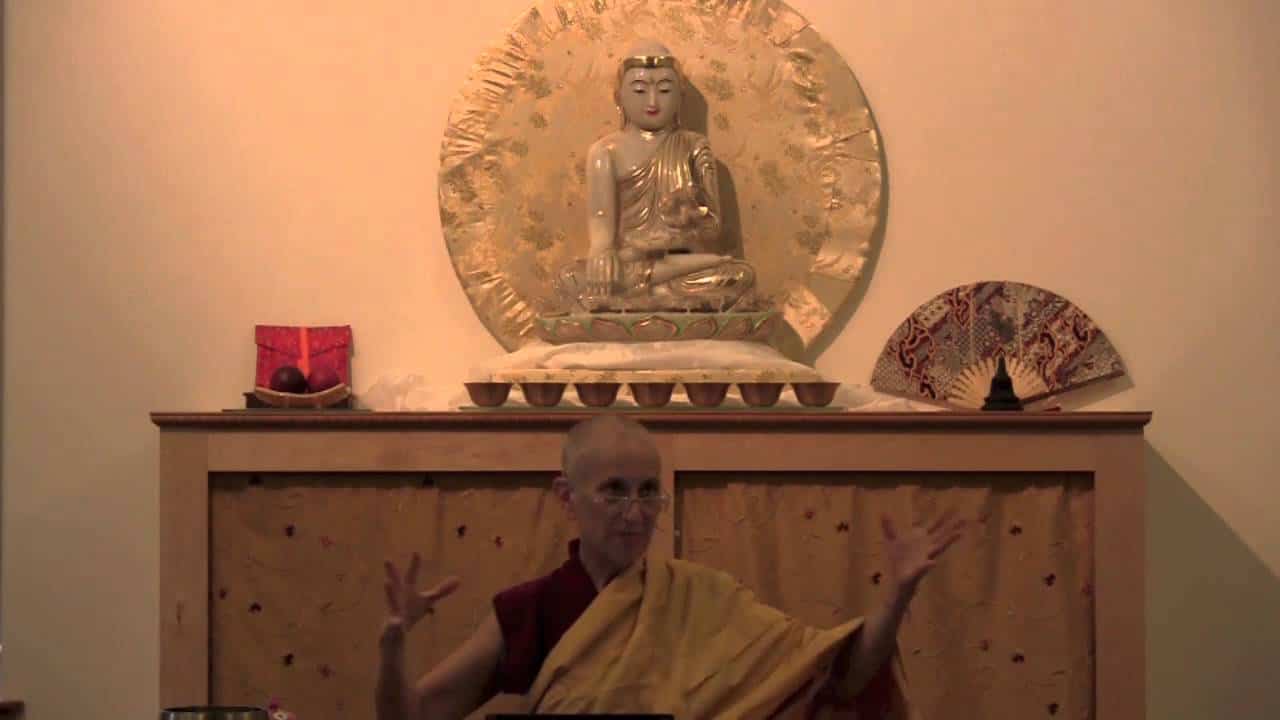Chapter 5: Verses 101-102
Part of a series of teachings on Aryadeva's 400 Stanzas on the Middle Way given on an annual basis by Geshe Yeshe Thabkhe from 2013-2017.
Motivation from Three Principal Aspects of the Path by Je Tsongkhapa
- How contemplation of impermanence, suffering, and uncleanness gives rise to renunciation
- How renunciation and the correct view give rise to aspirational bodhicitta
- Difference between aspirational and engaged bodhicitta
Verses 101–102
- Distinction between Hinayana and Mahayana dispositions
- How the causes of Buddhahood are in the Buddha, in the teachings he gave on how to practice virtue and abandon non-virtue
- Distinctive features and effects of Buddha’s activities
- Role of motivation for training in bodhisattva deeds
- Freedom from fear of death gained by having long-term Dharma perspective
- How awareness of death helps us cultivate good qualities and avoid harmful actions
- Cultivation of wisdom which conquers death
Geshe Yeshe Thabkhe
Geshe Yeshe Thabkhe was born in 1930 in Lhokha, Central Tibet and became a monk at the age of 13. After completing his studies at Drepung Loseling Monastery in 1969, he was awarded Geshe Lharampa, the highest degree in the Geluk School of Tibetan Buddhism. He is an emeritus professor at the Central Institute of Higher Tibetan Studies and an eminent scholar of both Madhyamaka and Indian Buddhist studies. His works include Hindi translations of The Essence of Good Explanation of Definitive and Interpretable Meanings by Lama Tsongkhapa and Kamalasila's commentary on the Rice Seedling Sutra. His own commentary, The Rice Seedling Sutra: Buddha’s Teachings on Dependent Arising, was translated into English by Joshua and Diana Cutler and published by Wisdom Publications. Geshela has facilitated many research works, such as a complete translation of Tsongkhapa’s The Great Treatise on the Stages of the Path to Enlightenment, a major project undertaken by the Tibetan Buddhist Learning Center in New Jersey where he teaches regularly.


